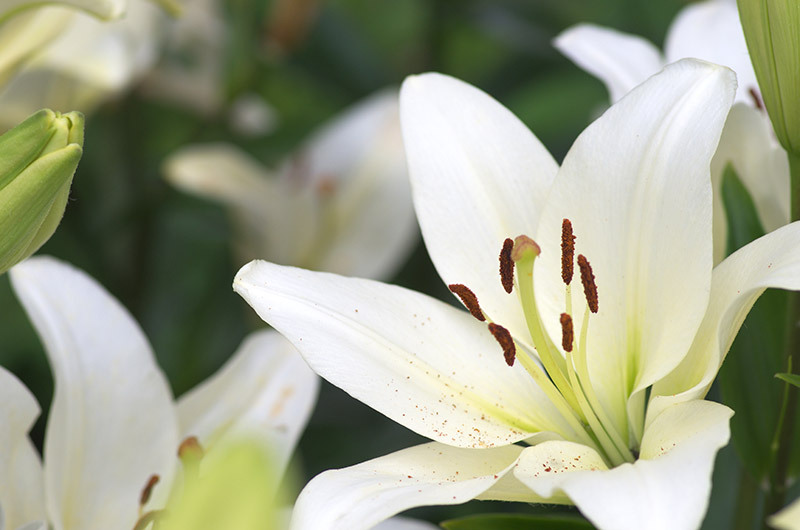How to Prevent Premature Wilting in Poinsettias: A Complete Guide
Poinsettias are synonymous with the festive season, illuminating homes and offices with their vibrant red, white, and pink bracts. Unfortunately, many enthusiasts encounter the common problem of premature wilting, which can quickly turn a beautiful display into a droopy, disappointing sight. If you're searching for effective poinsettia care tips to keep your plants healthy throughout the holiday season and beyond, this comprehensive guide will help you understand and prevent early wilting in poinsettias.

Understanding Premature Wilting in Poinsettias
Premature wilting occurs when poinsettia plants lose their turgidity and appear limp or droopy before the end of their expected display period. This can be caused by several environmental and care factors, and understanding them is the key to maintaining healthy poinsettias.
Common Causes of Early Wilting
- Improper watering—either overwatering or underwatering.
- Poor drainage leading to root rot.
- Temperature stress from drafts, heaters, or cold windows.
- Low humidity causing excessive water loss through leaves.
- Inadequate light affecting plant vigor.
- Pest infestations draining plant resources.
- Improper fertilization causing nutrient imbalances.
To successfully prevent wilting in poinsettias, it's important to address each risk factor and implement best practices throughout the plant's life.
Best Practices to Prevent Early Wilting in Poinsettias
1. Watering: The Golden Balance
Watering is perhaps the most critical and commonly misunderstood aspect of keeping poinsettias healthy. Both overwatering and underwatering can cause leaves to wilt and drop prematurely.
- Check soil moisture regularly: Stick your finger about an inch into the soil. If it feels dry at this depth, it's time to water.
- Water thoroughly: Apply water until it drains from the bottom of the pot. Discard excess water from saucers to prevent root rot.
- Avoid letting the soil dry out completely: Poinsettias have shallow roots that are sensitive to drought.
- Use room-temperature water: Cold water can shock roots, contributing to wilting in poinsettias.
Tip: If your poinsettia is wrapped in decorative foil, be sure to poke holes in the bottom and set it on a draining plate.
2. Optimize Light Conditions
Poinsettias require ample bright, indirect sunlight for robust growth. Insufficient light can lead to weak, leggy plants that wilt easily.
- Place near a sunny window: East, south, or west-facing windows with filtered light work best.
- Avoid direct afternoon sun: It can scorch the leaves.
- Rotate your plant: Turn the pot every few days for even light exposure and symmetrical growth.
3. Ensure Proper Drainage
Poor drainage is a leading cause of root rot in poinsettias, which manifests as wilted, yellowing foliage. Use the following strategies to prevent waterlogging:
- Choose pots with drainage holes.
- Use a high-quality, well-draining potting mix.
- Avoid decorative containers without drainage.
- Remove excess water from trays after watering.
4. Maintain Ideal Temperature and Humidity
Poinsettias are sensitive to temperature fluctuations and low humidity, which can result in premature drooping.
- Keep temperatures between 65°F and 75°F (18°C to 24°C) during the day.
- Avoid temperatures below 60°F (15°C) or above 80°F (27°C).
- Keep away from cold drafts, open windows, radiators, and heat vents.
- Increase humidity: Place a humidity tray or room humidifier near your plant or group poinsettias together to boost moisture in the air.
5. Check for Pests and Diseases
Wilting poinsettias may be a sign of infestation by pests such as whiteflies, spider mites, or fungus gnats. Diseases like stem or root rot can also wreak havoc.
- Inspect leaves (top and bottom) and soil regularly.
- Look for sticky residue, webs, or wilting stems.
- Promptly treat infestations: Use insecticidal soap or neem oil.
- Dispose of severely infected plants to prevent spreading.
6. Fertilize Sparingly
During the holiday display period, minimal fertilization is required for poinsettias. Overfeeding can damage roots and cause early wilting.
- Fertilize only after the flowering season: If you plan to keep your poinsettia for next year, use a balanced, water-soluble fertilizer every 2-4 weeks from late winter through fall.
- Avoid fertilizing immediately after purchase or when flowers are in bloom.
Advanced Tips for Keeping Poinsettias Fresh and Vibrant
Identifying and Solving Wilting Issues
If your poinsettia wilts despite proper care, use this troubleshooting checklist for rapid recovery:
- Limp but moist soil? Too much water. Allow soil to dry slightly before next watering.
- Limp with dry soil? Underwatering. Water immediately and allow to absorb moisture fully.
- Yellow leaves or stem blackening? Potential root rot. Remove the plant from the pot, cut away blackened roots, repot in fresh soil, and improve drainage.
- Pale or scorched leaves? Move plant to diffused, indirect light.
Transplanting and Repotting Poinsettias
If you intend to enjoy your poinsettia as a perennial, repotting is essential for ongoing health.
- Repot after the holiday season into a slightly larger container with fresh, well-draining potting soil.
- Trim back old flowering stems in spring to promote new growth.
- Gradually acclimate the plant to outdoor conditions if you plan to move it outside in warm weather.
Protecting Poinsettias During Transport
Many cases of premature wilting in poinsettias are caused during transport from the florist or garden center.
- Insist on a protective sleeve if it's cold outside. Poinsettias are highly sensitive to cold and can wilt irreversibly if exposed even for a few minutes.
- Unwrap promptly and avoid placing near doors, windows, or breezeways.
Reviving Wilted Poinsettias
If your poinsettia has wilted but the stems remain firm, you may still be able to revive it:
- Water thoroughly and wait for a few hours. Many plants perk up rapidly if underwatered.
- Trim off any dead or yellowing leaves to reduce stress on the plant.
- Increase humidity and monitor closely.
Seasonal Calendar for Poinsettia Care
To keep poinsettias healthy year-round and prevent premature drooping, consider the following guided care schedule:
-
November-December:
- Display in bright, draft-free rooms.
- Water as needed, monitor for pests.
-
January-March:
- Reduce watering as plant activity slows.
- Allow slight drying between waterings, but never let the soil become completely dry.
-
April-May:
- Prune to 4-6 inches to promote new growth.
- Begin light fertilization and repot if necessary.
-
June-August:
- Move outdoors to partial shade if desired.
- Continue regular watering and feeding.
-
September-October:
- Bring indoors before first frost.
- Provide 14 hours of darkness per night from October to encourage bract coloring.

Frequently Asked Questions About Poinsettia Care
Why do poinsettia leaves wilt and drop suddenly?
Common causes include root rot from excess moisture, abrupt temperature changes, or accidental exposure to cold drafts. Address the specific issue by adjusting care conditions as described above.
Is misting helpful in preventing early wilting?
Occasional misting can increase humidity but is not a substitute for appropriate watering and air moisture. Avoid overdoing it, as water on leaves can promote mold or fungus.
Can I revive a severely wilted poinsettia?
If the stems are still green and pliable, there's hope. Follow the revival steps outlined earlier. If the stems are brown and brittle, the plant may be beyond saving.
Conclusion: Enjoy Lush Poinsettias All Season Long
With proper attention to watering, light, humidity, temperature, and pest management, you can easily prevent premature wilting in your poinsettias and keep them vibrant throughout their display period. Not only will these proactive steps ensure lasting holiday beauty, but you'll also be able to enjoy healthier plants year after year, making your festive decor truly stand out. Remember: when it comes to keeping poinsettias from wilting early, vigilance and consistency are your best tools.
- Check your plant's moisture and environment daily during the display season.
- Address problems promptly and don't be afraid to trim, repot, or treat as needed.
- Share your poinsettia care knowledge to help friends and family enjoy the longest-lasting blooms this festive season!
Now that you know how to prevent premature wilting in poinsettias, you can confidently nurture these classic holiday plants to their full, festive glory.

